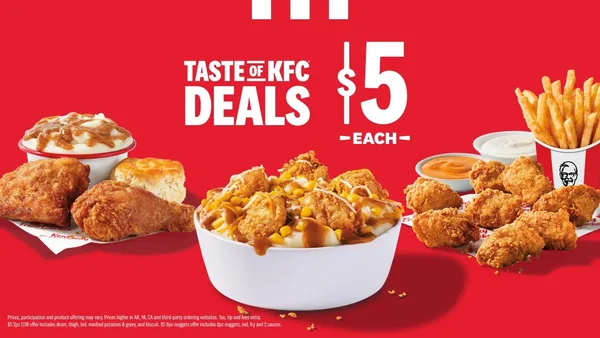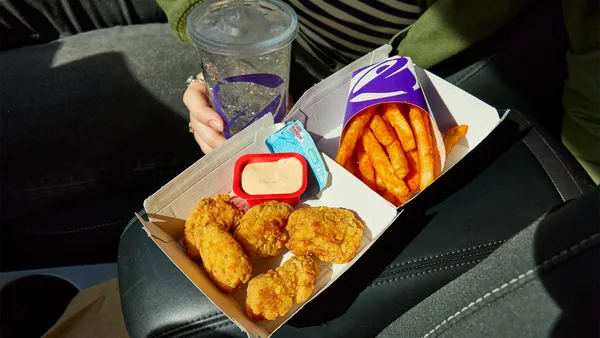Dive Brief:
- Domino's Pizza posted slower-than-expected sales growth during the third quarter, according to a company release. Revenue rose 22% to $786 million, coming below Wall Street expectations of $788 million. Net income grew 49.2% to $84.1 million compared to $56.4 million last year due to higher global royalty revenues and supply chain volumes.
- At restaurants that had been open for at least a year, sales rose 6.3% during the period. Same-store sales at company-owned U.S. stores rose 4.9%, coming in below analyst expectations of 6.2%. Still, this marks 30-straight quarters of same-store U.S. sales growth for the pizza company. Franchised U.S. stores saw sales climb 6.4%, missing estimates of 6.8% growth. "Our U.S. business once again executed at extremely high levels in the third quarter," Ritch Allison, Domino's CEO, said in the release.
- In the global market, same-store sales met expectations, rising 3.3%. Domino's said the third quarter marked the 99th consecutive period of positive international same-store sales growth.
Dive Insight:
Though its Q3 results were uneven, Domino's still delivered strong earnings for the period — results that bolster the largest U.S. pizza chain's lead over rivals Papa John's and Yum Brands' Pizza Hut division.
The company's international performance for the period was a notable bright spot, and suggests that its investments in growth beyond the intensifying American pizza landscape are paying off. Domino's announced Tuesday that it opened 173 new international restaurants during the period, more than twice the number of locations it launched domestically.
Pizza Hut has tried to check Domino's growth on the international stage, but Domino's still raked in slightly stronger global sales in 2017 — $12.2 billion compared to $12 billion. Pizza Hut, which has 17,000 restaurants in more than 100 countries, recently tapped a new president of its international division as it looks to expand more aggressively in foreign markets. It's unclear if an executive change will be enough for it to overtake Domino's.
Domino's international division is entirely franchisee-owned, and supply chain revenue from franchisees rose 10.7% to $445.1 million for the third quarter, coming short of Wall Street expectations of $449 million.
The pizza chain's innovations domestically are driving positive results as well — 30-straight quarters of same-store sales growth, especially as the pizza segment is disrupted by third-party delivery services such as Postmates and DoorDash.
Much of this growth results from Domino's deep investments in tech innovations, a strategy that has vaulted it to the front of the pizza restaurant pack and positioned it as an innovator in the eyes of consumers. The chain, which refers to itself as "a technology company that sells pizzas," has doubled its market share since beginning its digital transformation in 2009.
Since then, the company has launched Domino's Hotspots delivery, which allows customers to order pizza to public spaces without street addresses, such as parks, stadiums and beaches. The pizza giant also enables the public to place orders through Facebook with a pizza emoji; pizza-ordering shoes; drone delivery and driverless delivery cars.
Though some of these initiatives lean more toward marketing gimmicks than true innovation, they all cater to growing consumer demand for frictionless delivery. As the pizza wars heat up, the company that can deliver the smoothest (and fastest) ordering experience from purchase to delivery will likely come out on top, especially since consumers tend to spend more when placing digital orders. Though Domino's boasts an impressive portfolio of tech innovations, it may need to further improve these offerings to strengthen sales and protect its turf.














